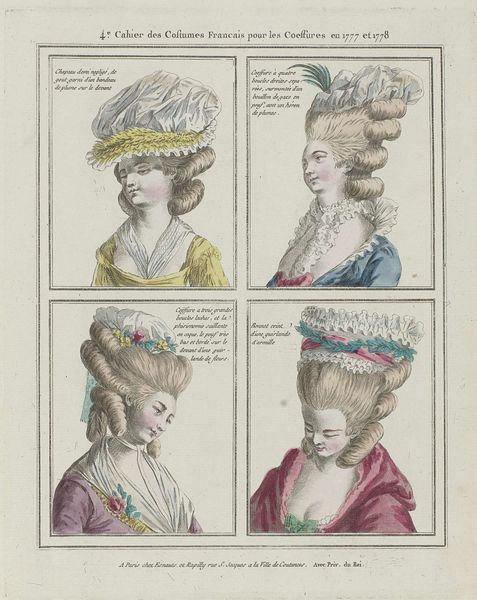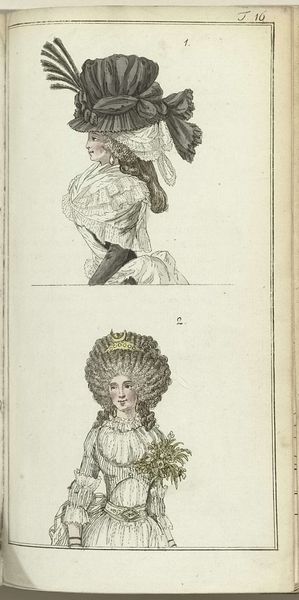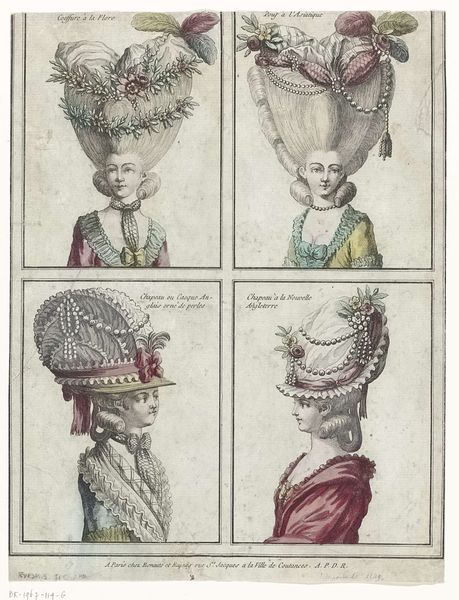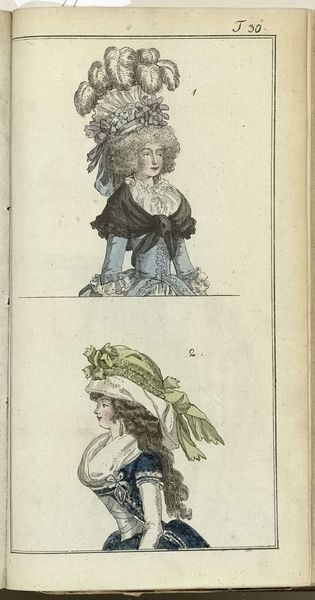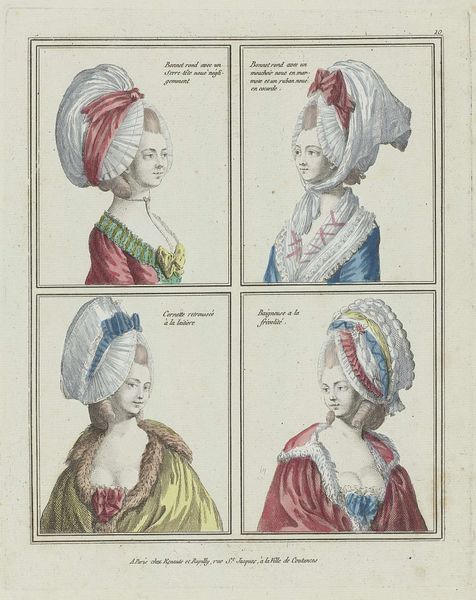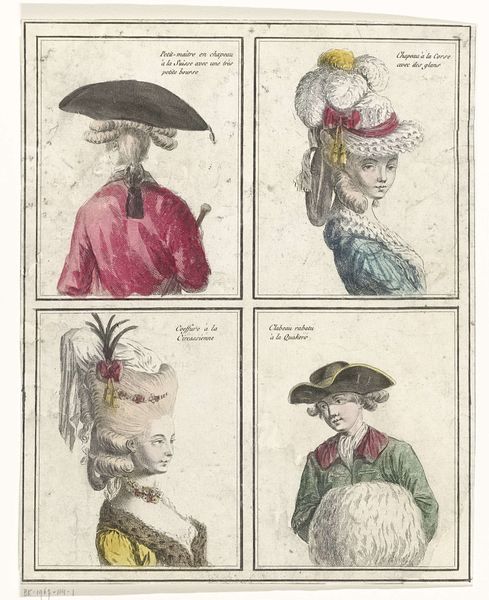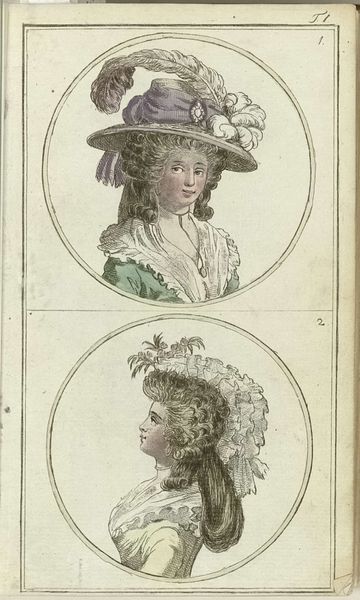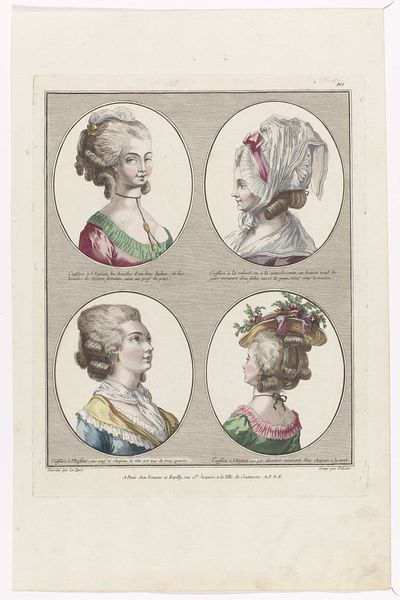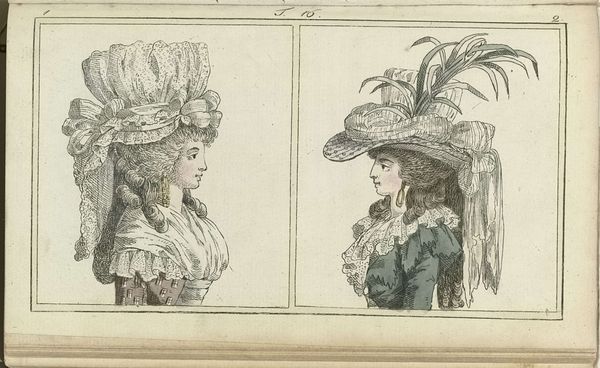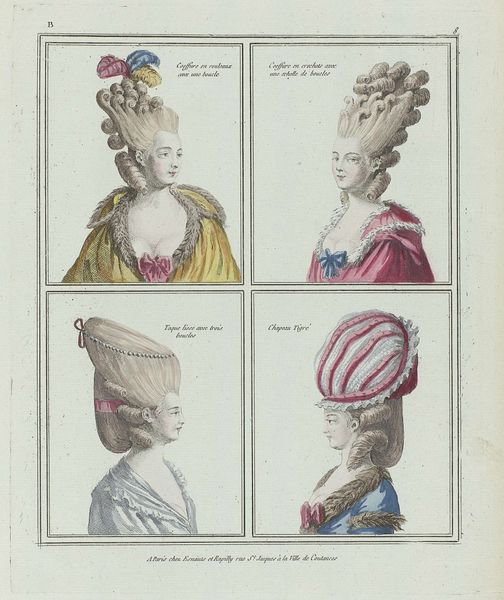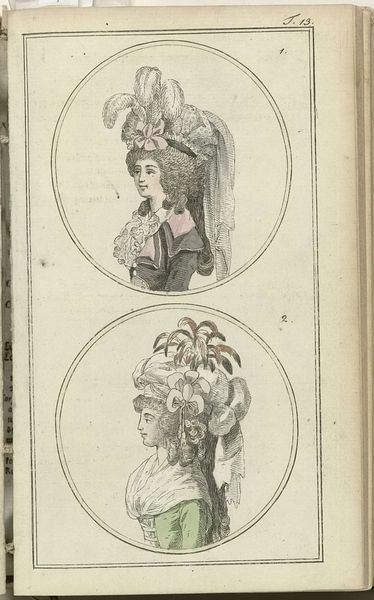
Copyright: Rijks Museum: Open Domain
This is Plate XII from the ‘Cabinet of Fashion and Taste’, an engraving made in 1791 in the Netherlands. It presents six head-and-shoulder studies of women, each wearing a distinctly elaborate and artificial construction of dress and coiffure. Considered as a whole, this ‘cabinet’ offers an encyclopedic compendium of elite fashion. It begs the question: to what extent are such things dictated from above or adopted and adapted from below? In the late 18th century, fashion plates like these played a crucial role in codifying social status, and they are best understood alongside a rapidly expanding print culture. Periodicals, newspapers, and illustrated books became powerful tools for disseminating ideas about taste, manners, and social decorum. The historian can interpret these artworks as reflections of broader social, economic, and political forces. Resources such as fashion magazines, etiquette manuals, and personal correspondence can illuminate the cultural values and social anxieties that shaped the production and consumption of fashion in this period. Ultimately, the meaning of art lies in its ever-evolving social and institutional context.
Comments
No comments
Be the first to comment and join the conversation on the ultimate creative platform.
